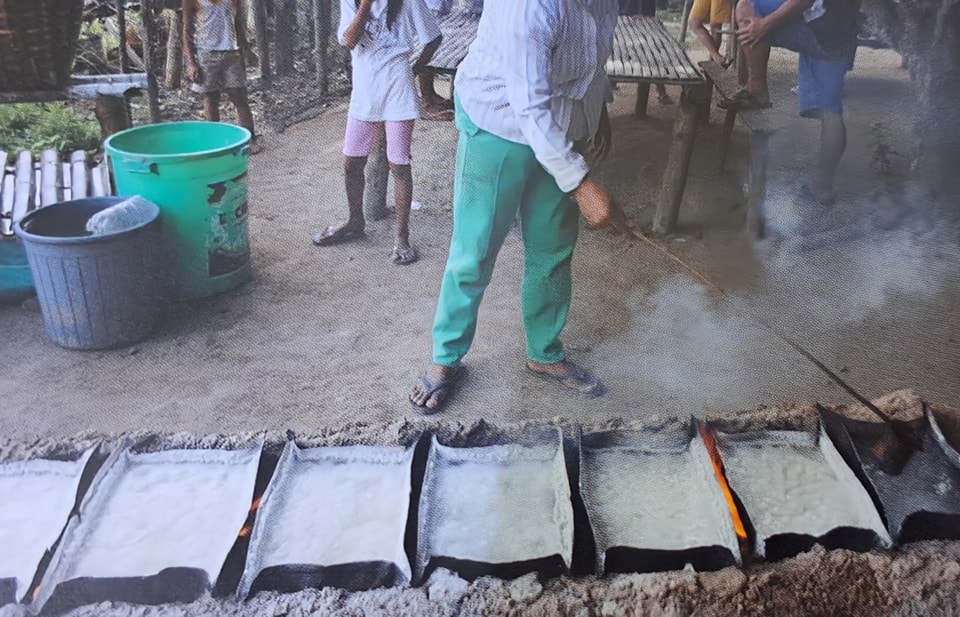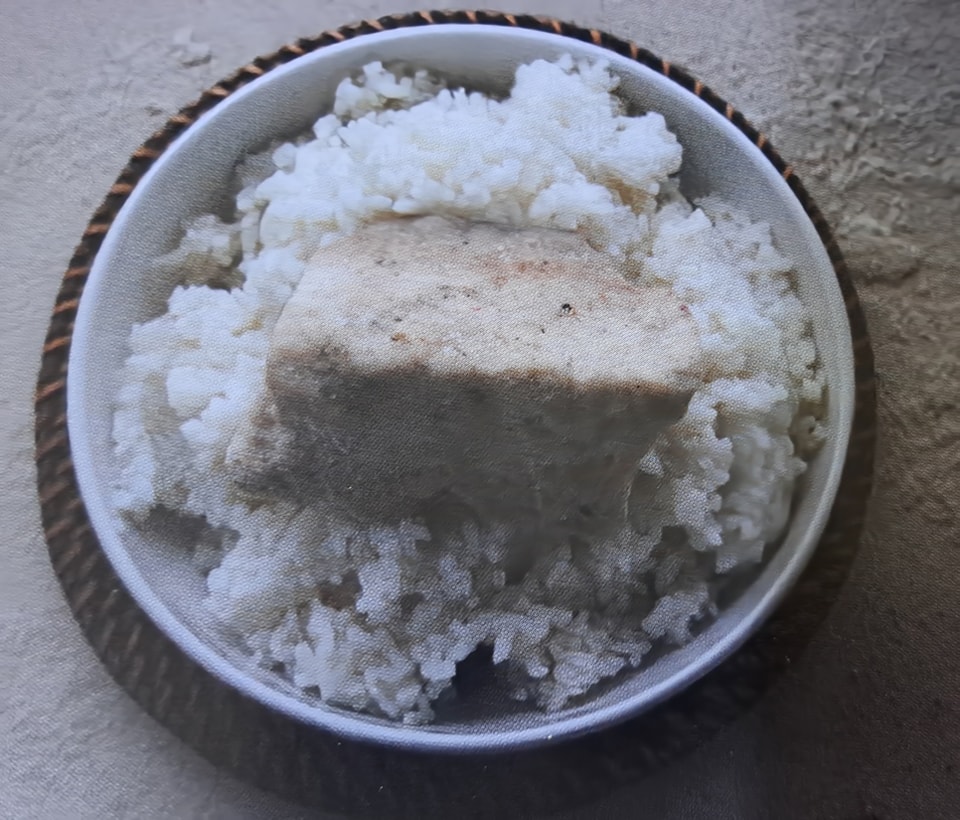Tultul is a block of salt that lives on the island of Guimaras but has vanished in Iloilo’s food memory. It’s called tultul. It looks like a chunk of white coral with a gray, cement-like base. Run your finger on its surface and it will taste salty.
The couple Serafin and Emma Ganila still make the tultul at Sitio Cabadiangan, Barangay Hoskyn, in the capital of Jordan.

The process starts with the gathering of what would seem like trash taken from the beach front-coconut husks, twigs, broken coral, anything except things made out of plastic. These are gathered into a pile and covered with dried branches of bamboo and coconut leaves.
The pile is set on fire and the ashes are doused with seawater. This step is done again and again for six days until a sackful of ashes is obtained.
Those ashes will be placed in a kaing (woven container) where seawater is again poured on the ashes. The liquid is caught through bamboo pipes that lead to a pail. This step is done twice. The strained water is then placed on several halved cooking-oil tin containers.

Those are placed on an improvised stove made of two rows of hardened sand with the fire set in between. The water is boiled, evaporated refilled and when reduced the block salt is the result. What makes it stick together is coconut milk mixed in while the water boils.
Tultul ends up in big pieces, and small chunks are chiseled out and sold on town market days.

Having tultul and eating it too. A piece of tultul is usually patted on rice to give the dish a mildly salty flavor. Others dip it first into oil used to fry chicken called manchada. Somehow, tultul reached its peak of use during the war when food was hard to come by.
A pat of salt on rice must have been enough to replace viand. Tultul is also made in other places of the country. It’s also called tultul in Sultan Kudarat, Mindanao. In Roxas it’s called dukduk, in Samar it’s dudu. In Cabra, Oriental Mindoro, it’s binaluto, in Quezon it’s tap-og.
Source: Reynaldo Gamboa Alejandro and Vicente Roman Santos in Estilo Ilonggo: Philippine Southern Lifestyle published by KCC Innovations in cooperation with DOT (2009).
